15+ Best UX Design Websites for Inspirations
Summer Nguyen | 07-24-2023

Are you tired of building a website that frustrates you with its confusing navigation and cluttered layouts?
Do you wonder why some websites are a pleasure to use while yours leave you feeling overwhelmed?
If so, it’s time to learn from the most successful examples and explore what other enterprises are doing right with their user experience (UX) design websites.
This article will delve into the world of UX design and investigate how it can transform a website into a smooth and enjoyable experience for its visitors. So, buckle up and get ready to unlock the secrets to creating exceptional user experiences through UX design.
What is a UX design website?
User Experience (UX) refers to the overall experience that a person has while interacting with a product, system, or service. It encompasses all aspects of the user’s interaction, including the user interface, design, usability, accessibility, and overall satisfaction. The goal of UX design is to create a positive, meaningful, and enjoyable experience for the user.

UX design is the process of designing products or systems that provide a positive and seamless user experience. It involves understanding the needs and behaviors of users, creating user personas, and designing interfaces that are intuitive and easy to use. UX designers often use various tools and techniques, such as user research, wireframing, prototyping, and testing, to ensure that the final product meets the needs and expectations of users.
A UX design website is a website that effectively applies principles of UX design to enhance the overall user interaction and satisfaction. It is a well-designed website that prioritizes user needs, usability, and a positive overall experience. Moreover, it has been carefully crafted to provide users with an intuitive, efficient, and enjoyable experience.
Read more: Magento Website Audit Checklist 2023: Don’t Ignore Anything!
Importance of UX design in website development
UX design in websites directly impacts how users interact with and perceive a website. Apparently, it plays a significant role in website development, and here are some common reasons why it is extremely important to most website owners:
-
User satisfaction. UX design frequently aims to create a positive, enjoyable user experience by considering needs, preferences, and behaviors, ensuring easy navigation, visually appealing content, and relevant content.
-
User Retention: Websites with a good UX are more likely to retain users. If visitors find a site confusing, slow, or difficult to use, they are likely to leave quickly. A positive UX encourages users to stay longer, explore more, and accomplish their goals.
-
Usability and accessibility. UX design prioritizes usability and accessibility, ensuring website inclusivity and ease of use for diverse users. This involves intuitive navigation, clear content, and adherence to accessibility guidelines.
-
Search Engine Optimization (SEO): Search engines like Google consider user experience as a ranking factor. Websites with good UX, such as fast loading times, mobile-friendliness, and quality content, are likely to rank higher in search results.
-
Adaptation to User Behavior: UX design involves understanding user behavior through research and testing. This knowledge allows designers to adapt the website to user needs and preferences, creating a more personalized and engaging experience.
-
Brand perception and trust. A well-designed website positively impacts a brand’s image and credibility, with UX design incorporating consistent branding elements, building familiarity, trust, and user engagement.
-
Conversion rate optimization. UX design websites usually optimize user journeys, reduce barriers, and optimize call-to-action elements to increase conversion rate and achieve business objectives.
-
Competitive advantage. UX design can offer a competitive edge by providing a superior user experience, attracting and retaining users, increasing engagement, customer loyalty, and strengthening market position.
So, by focusing on user-centered experiences, usability, accessibility, goal achievement, brand perception, conversion rates, and competitive advantage, UX design can improve website development. Moreover, it can drive positive outcomes and contributes to businesses’ success.
15+ best UX design website inspirations
1. Mageplaza
Mageplaza is an outstanding example of a UX design website that stands out for its intuitive user experience and visually appealing interface. This company focuses on not only developing strong tools but also enhancing user experience, demonstrating its knowledge of e-commerce.
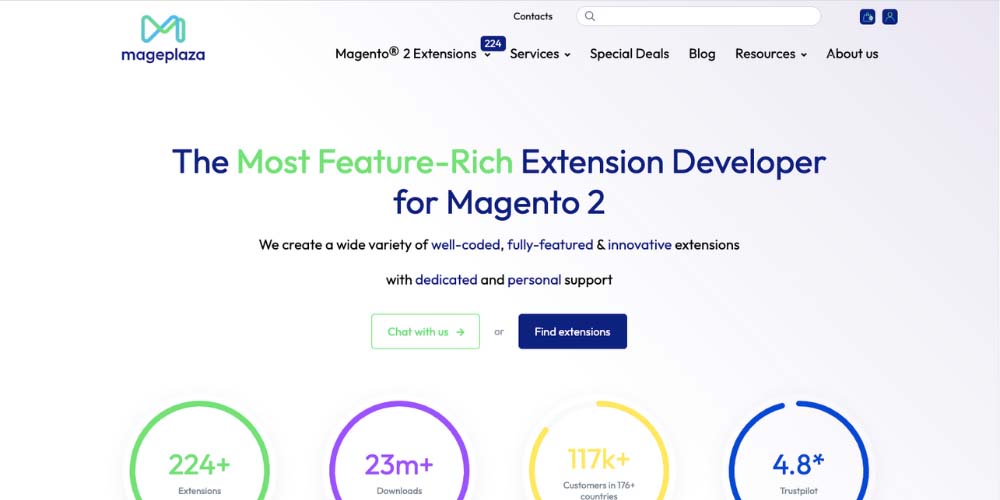
Mageplaza’s website stands out with its it UX-design feature:
-
Clear and Purposeful Design: Intentional visual elements communicate brand identity and guide users effectively.
-
Easy Navigation: Prominent navigation elements and logical categories simplify the browsing experience.
-
Color Scheme: Soothing color scheme enhances visual appeal and creates a comfortable environment.
-
Effective Use of Whitespace: Whitespace is used to organize content, promoting focus on essential elements.
-
Prominent Navigation: Highlights navigation elements for easy exploration of different website sections.
-
Logical Categories: Organizes products and information logically for intuitive user navigation.
-
Accessible Search Functionality: Features a user-friendly search function for quick access to specific items or resources.
2. Airbnb
Airbnb is an excellent example of a user-centric website that prioritizes exceptional user UX design. Through its user-friendly website, Airbnb transformed the travel and accommodation industry by connecting guests and hosts and providing an easy, pleasurable experience.

A simple, intuitive interface characterizes Airbnb’s UX design, ensuring users feel at ease. The homepage features a search bar, enticing images, and personalized recommendations, enabling users to quickly find and explore their desired destinations.
Furthermore, its UX design also features high-quality images, detailed descriptions, reviews, and ratings to showcase properties for rent, enabling users to make informed decisions before booking.
Plus, this website prioritizes social proof and trust-building through verified user profiles, user reviews, and ratings. These features help build trust within the community, allowing hosts and guests to share information and experience with others.
3. Grammarly
Grammarly is a user-centric UX design website with innovative features, which enhance the writing experience. Its user-friendly interface, intelligent algorithms, and diverse tools make it a popular platform for improving writing skills.
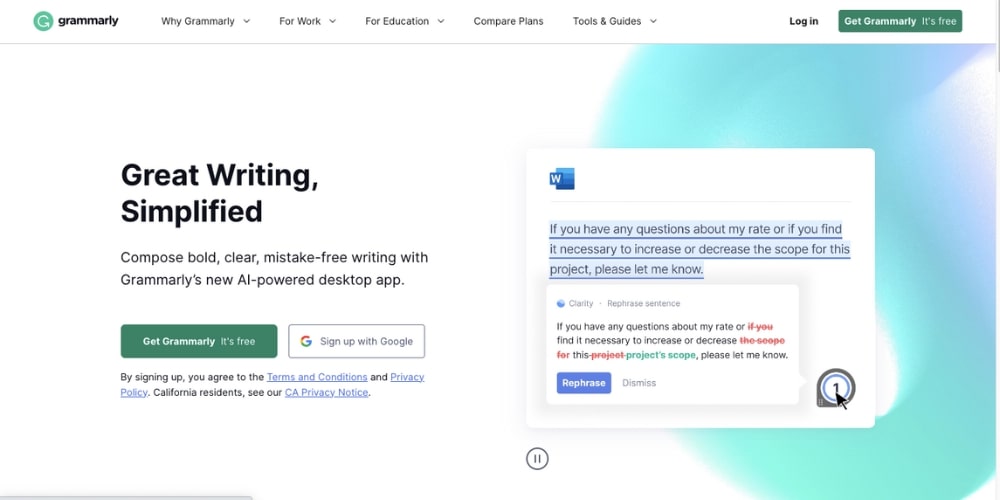
Clear calls-to-action guide users seamlessly, and the streamlined onboarding introduces key features efficiently. The user-friendly dashboard allows easy management, and personalized suggestions enhance the writing experience. Real-time feedback is delivered promptly without interruptions.
The site’s responsive design ensures a consistent experience across devices. Educational resources aid user understanding, and seamless integration into existing workflows is a notable feature. Clear information hierarchy facilitates easy navigation, and user feedback is actively encouraged for continuous improvement. The website’s fast-loading nature emphasizes efficiency and quick access to Grammarly’s features.
4. Apple
Apple’s website is one of the best inspirations of excellent UX design, combining attractive design, simple navigation, and educational content for an engaging online visit.
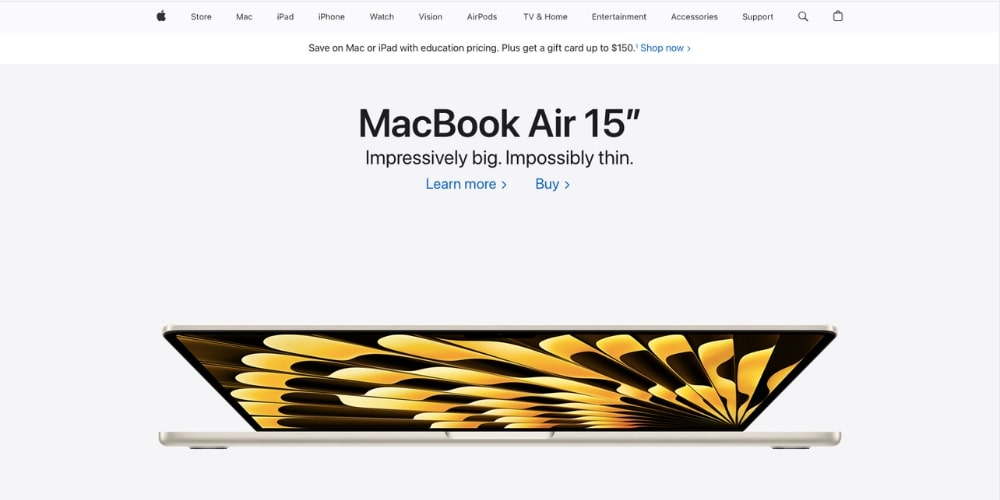
First, Apple’s website features a minimalist design with white space, crisp typography, and high-quality product imagery, which allows users to focus on essential elements.
Also, this UX design website emphasizes responsiveness, ensuring consistent and optimized experiences across various devices, ensuring a suitable adaptation to screen sizes and resolutions.
In addition to its visual and navigational excellence, for user diversity and simplicity of use, this website prioritizes accessibility, following industry standards, and using alternative text and keyboard navigation.
5. Trello
Regarding the best UX design websites, Trello, a popular project management and collaboration tool, must be on the list.
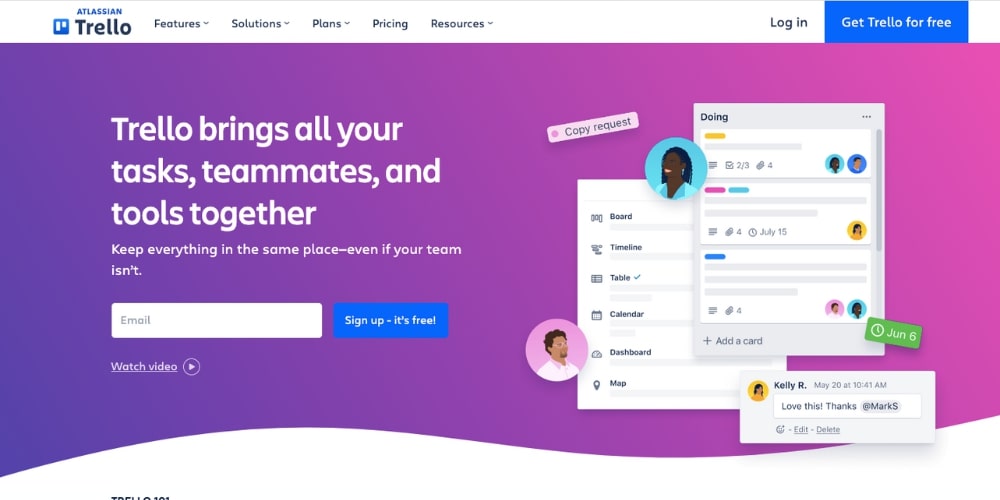
Trello’s UX design prioritizes simplicity and ease of use, with a visually appealing, uncluttered layout and intuitive card-based system for organizing tasks and information without extensive tutorials or documentation.
Trello also utilizes visual hierarchy to guide users, with distinct cards representing tasks, items, and clear headings, labels, and tags for quick project identification.
Moreover, its drag-and-drop functionality enables users to move cards across lists or boards, enhancing project management and collaboration.
6. Slack
Slack is a popular communication platform with powerful messaging features and a well-crafted UX design, featuring an intuitive interface and thoughtful interactions for an enjoyable experience.
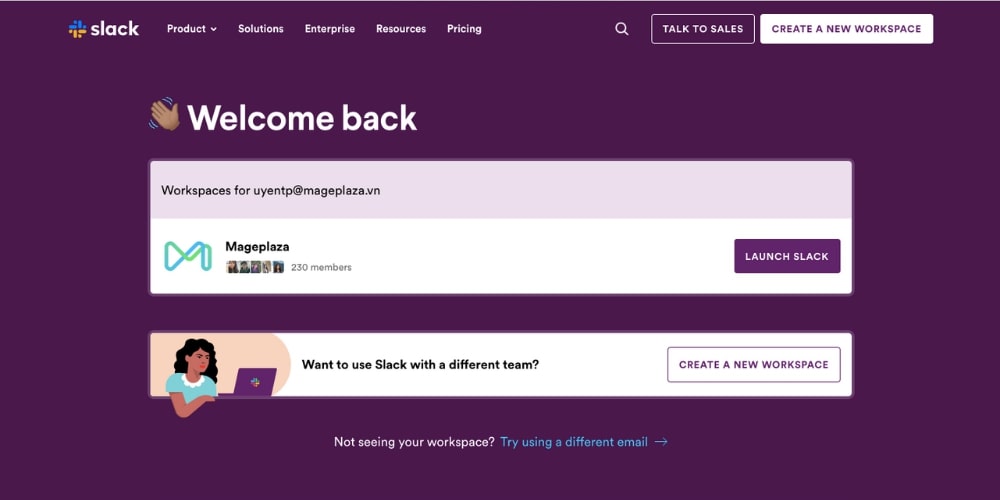
As we can see, this website has a clear, logical structure for easy navigation, with prominent main navigation and a well-defined information hierarchy for quick access.
Also, its minimalist design eliminates clutter, offers a visually pleasing experience, and uses contrasting colors for attention. Additionally, clear labels and recognizable symbols enhance usability and reduce cognitive load.
Furthermore, Slack gives accessibility a priority in its user experience design to ensure platform usability for a range of users. The platform is inclusive since it follows standards like logical arrangement, descriptive alt tags, and color contrast.
7. Pinterest
Pinterest, launched in 2010, is a popular visual discovery platform with millions of active users. Its success is attributed to its intuitive design, consistent interactions, and personalized recommendations.

It is clearly shown that Pinterest’s UX design prioritizes visual appeal, using high-quality images, vibrant colors, and a clean layout for an engaging, user-friendly experience.
In addition, the search bar at the top, auto-suggest, filters, and categories on Pinterest’s user interface makes it simple and convenient for users to explore and analyze information.
Its UX design also prioritizes content organization and management, allowing users to create boards and categorize pins based on interests. Hence, this personalization and visual organization sets it apart from other platforms.
8. Spotify
Spotify is a successful UX design website, which provides an intuitive, user-friendly interface for music streaming, focusing on key aspects for immersive experiences.
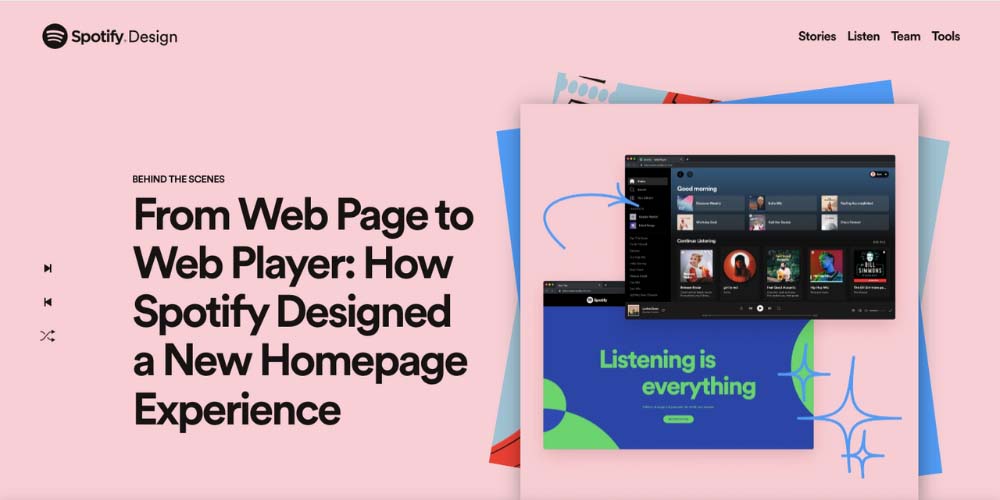
Spotify prioritizes user needs and preferences, offering personalized experiences by analyzing habits and providing customized recommendations. The platform’s design also prioritizes user engagement, ensuring a satisfying and engaging experience.
Moreover, Spotify’s intuitive interface features familiar icons and labels for easy navigation, with a logical main menu for Home, Search, Library, and Podcasts, ensuring a consistent browsing experience.
Also, Spotify’s personalized recommendations feature utilizes advanced learning techniques to analyze user behavior, providing customized playlists, daily mixes, and weekly discoveries, enhancing engagement and excitement.
9. Paypal
PayPal, a leading online payment platform, prioritizes user experience through practical UX design principles, ensuring smooth, intuitive interactions for millions of users worldwide.
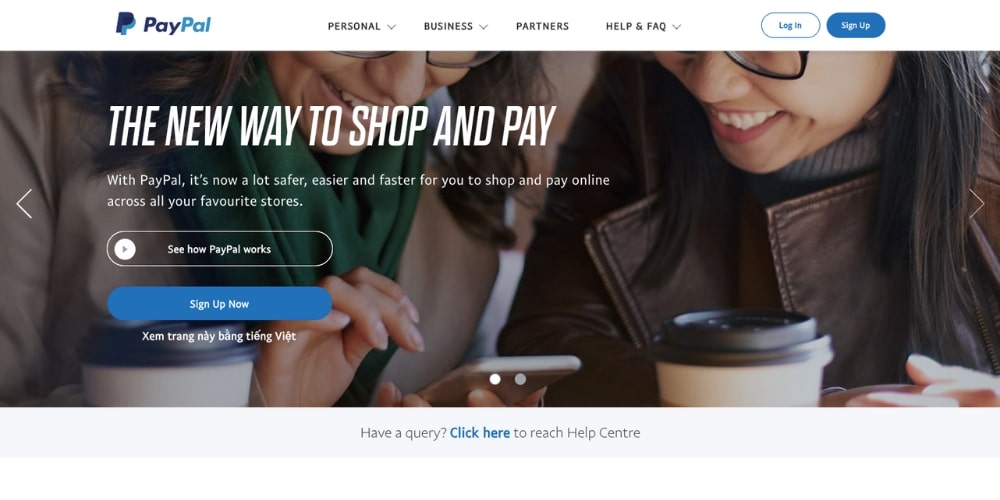
First, users may complete activities more quickly because of PayPal’s user-friendly interface, which features a clear, simple design and prominent displays of key features like sending and receiving money.
In addition, PayPal prioritizes mobile devices in its app and website, ensuring seamless user experience on smartphones and tablets with responsive design and varying screen sizes.
Last but not least, PayPal prioritizes providing users with comprehensive tools, including frequently asked questions, tutorials, and contact methods, ensuring quick responses to questions and issues.
10. Credit Karma
Credit Karma’s UX is centered around a clear financial dashboard, offering tailored suggestions and comparative credit scores with a visual overview. This design helps users easily understand their financial status, fostering trust by clearly explaining where the information comes from and how it’s used.
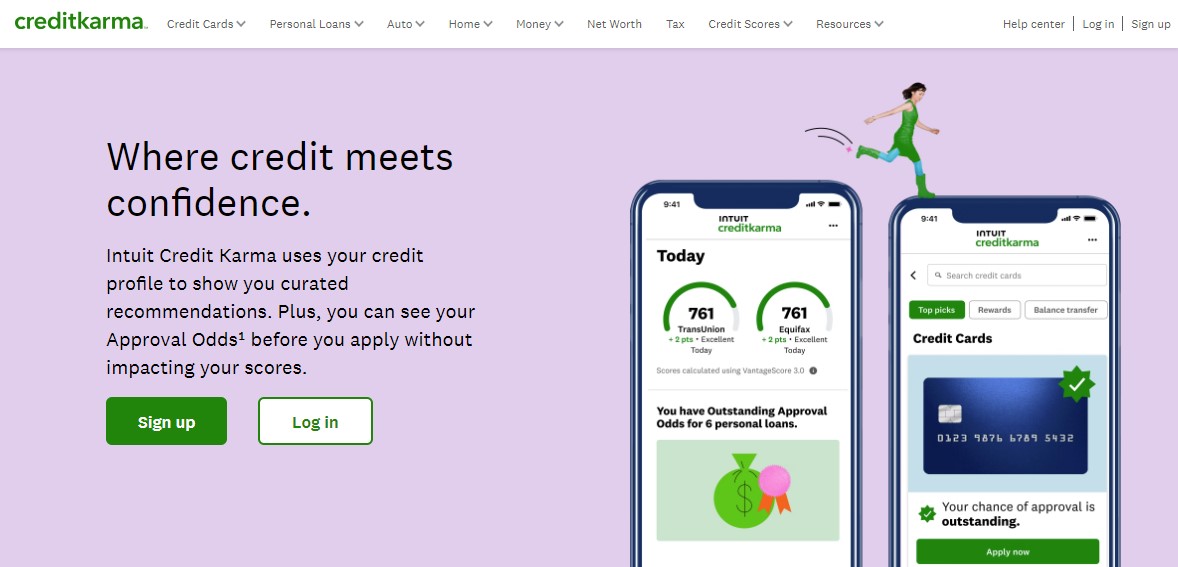
Analyzing Credit Karma’s UX (User Experience) design reveals a focus on several key aspects that make it stand out:
-
User-Centered Design: Credit Karma is geared towards providing a seamless experience for its users, especially in managing and understanding their personal finances.
-
Clear Financial Dashboard: The website features a well-organized dashboard that displays vital financial information, such as credit scores and reports, in a clear and accessible manner.
-
Tailored Suggestions and Insights: Credit Karma offers personalized recommendations based on the user’s financial data. This could include suggestions for credit cards, loans, or ways to improve credit scores.
-
Comparative Credit Scores with Visual Overviews: The platform uses visual elements like charts and color-coded graphics to help users understand their credit scores in relation to average scores or desired thresholds.
-
Trust and Security: Given the sensitivity of financial data, Credit Karma emphasizes trust and security in its UX design. Clear descriptions of data sources and the system used for credit reporting are provided, reassuring users about the confidentiality and accuracy of their personal information.
-
Educational Resources: Credit Karma includes educational content that helps users understand various aspects of personal finance, credit scores, and financial products.
-
Responsive Design: The website and mobile app are designed to be responsive, ensuring a consistent and high-quality user experience across different devices and screen sizes.
-
Minimalist and Intuitive Interface: The interface is designed to be intuitive and easy to navigate, with a minimalist aesthetic that avoids clutter.
11. Duolingo
Duolingo’s UX design stands out for its engaging, interactive approach, heavily utilizing gamification to enhance the language learning experience. The platform features levels, points, and achievements, making the learning process enjoyable and motivating.
Users can easily track their progress through visual indicators like progress bars and daily streaks, providing a sense of accomplishment and encouraging continuous learning. The app’s interface is intuitive and user-friendly, with clear icons and visuals ensuring easy navigation for all users.
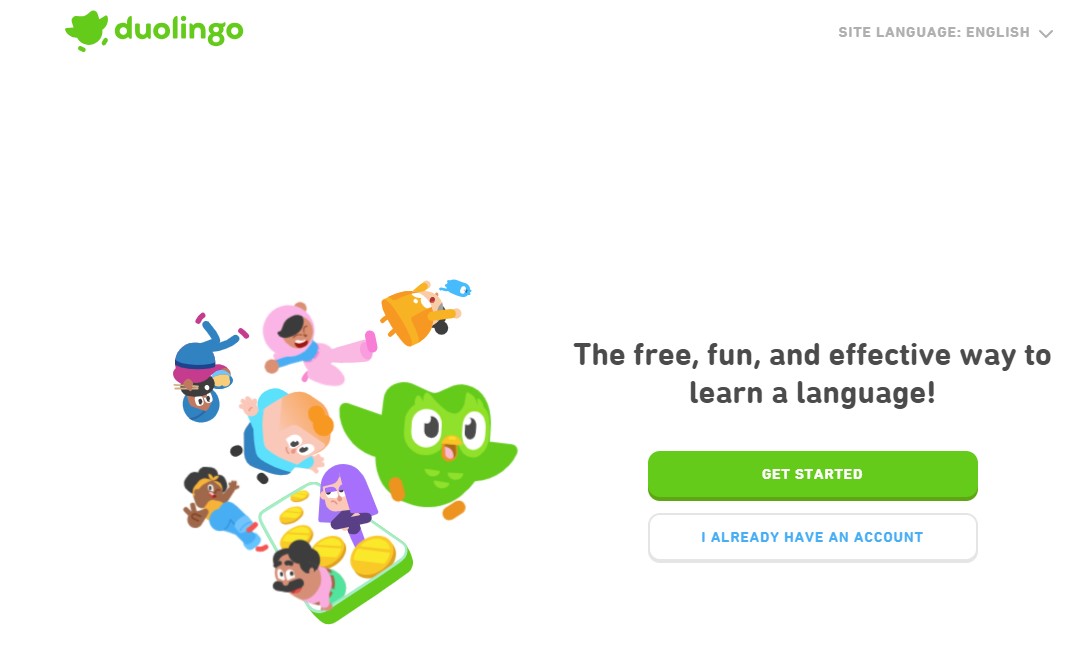
The lessons in Duolingo are interactive and diverse, including exercises in translation, listening, and speaking, catering to various learning styles. This is complemented by the microlearning approach, which breaks down content into small, manageable segments, fitting easily into users’ daily routines.
Social features like language clubs and leaderboards foster a sense of community and competition, while regular updates and improvements based on user feedback highlight Duolingo’s commitment to user satisfaction and continuous development.
12. Ralph Lauren
Ralph Lauren’s website exemplifies a sophisticated approach to UX design, tailored to mirror the brand’s elegance and style.
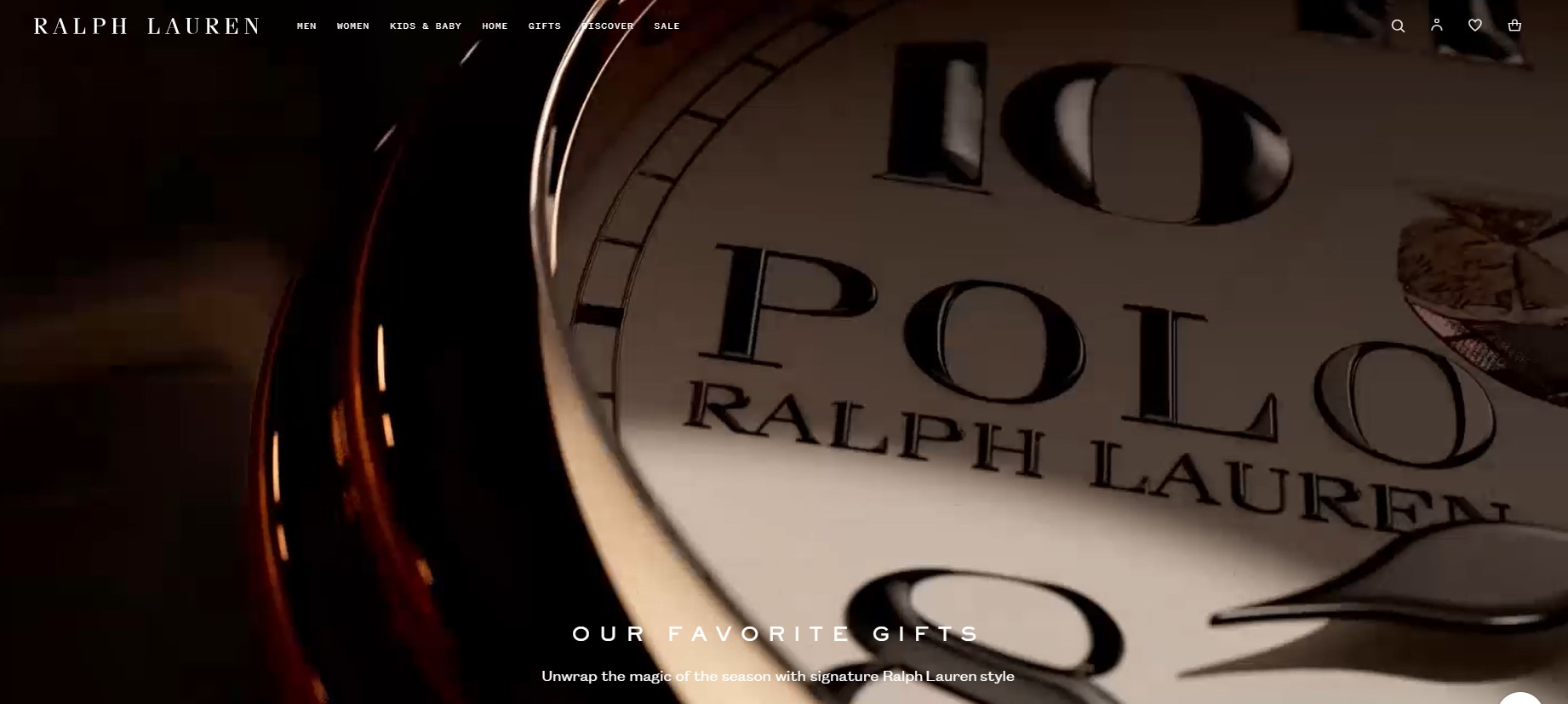
The website is characterized by the following elements:
-
Integration of Visuals: Ralph Lauren’s website skillfully blends high-quality images and videos, showcasing products effectively and maintaining the brand’s stylish aesthetic.
-
Intuitive Navigation and Layout: The site’s design is user-friendly, allowing easy navigation through products, brand information, and purchasing options.
-
Responsive Design: The website adapts well across various devices and screen sizes, ensuring a consistent experience on desktops, tablets, and smartphones.
-
Elegant Aesthetic: Reflecting Ralph Lauren’s luxury brand identity, the website uses a sophisticated color palette and design elements to create an elegant user interface.
-
User-Centric Shopping Experience: Prioritizes ease of shopping with clear product categories, accessible options for size and color, and a straightforward checkout process.
-
Product Presentation and Descriptions: Each product is presented with detail, highlighting quality and style, accompanied by informative descriptions to assist in purchasing decisions.
-
Brand Storytelling: Incorporates storytelling elements, giving users insights into the brand’s heritage and values, enhancing the connection between customers and the brand.
13. Mural
Mural’s UX design is characterized by its visually dynamic and engaging interface, which is essential for a platform focused on collaborative and creative work. The use of vibrant colors and interactive elements not only captures users’ attention but also fosters a creative atmosphere. Despite the rich visual design, the website maintains easy and simplified navigation, allowing users to quickly understand the platform’s features and how to use them effectively.
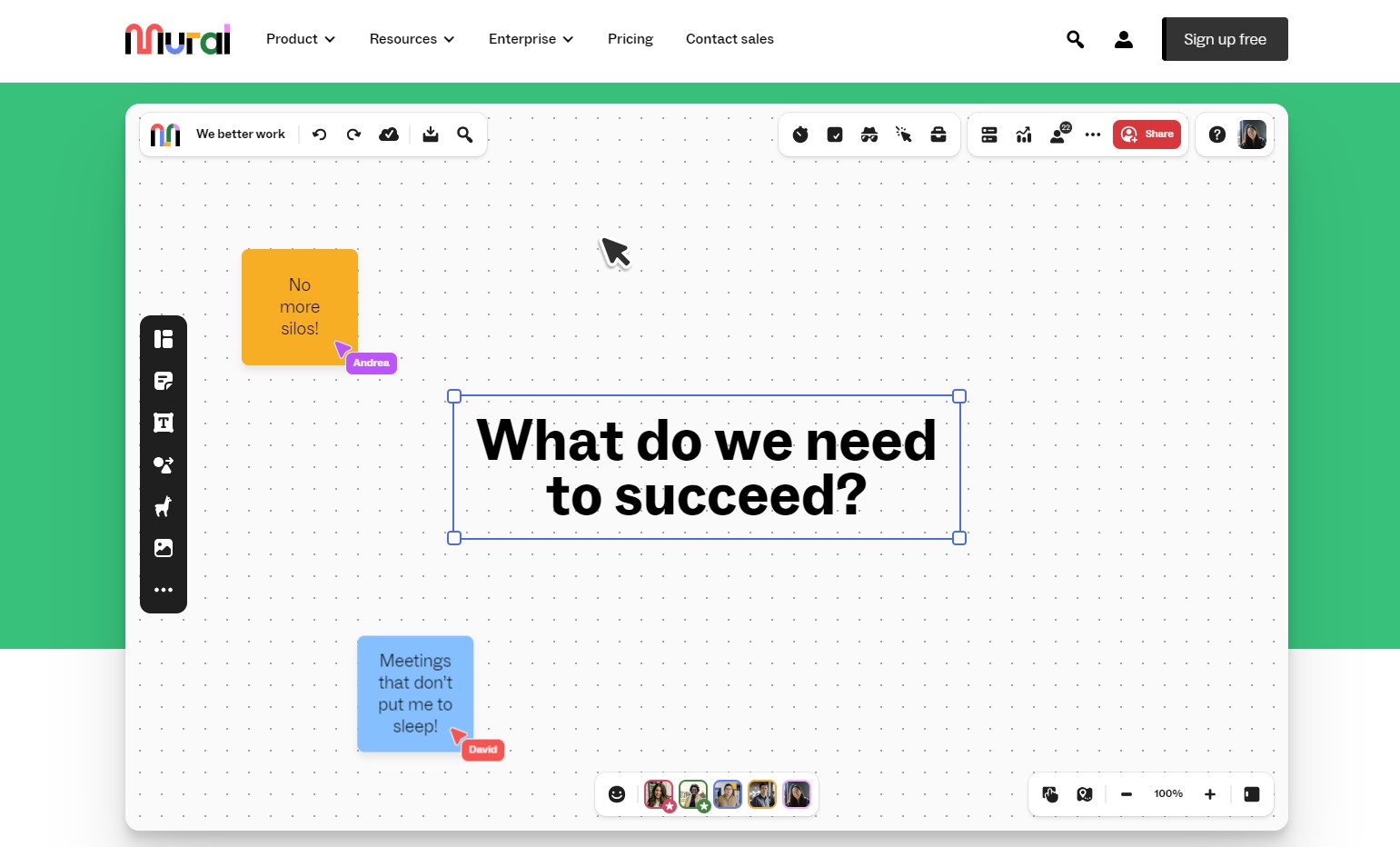
The platform emphasizes its core functionality of collaborative workspaces, showcasing how teams can interact and share ideas in real time, regardless of geographical location. Mural also includes educational content to help users maximize the tool’s potential, featuring tutorials and best practices.
Additionally, the design is responsive, ensuring a seamless experience across various devices. User feedback is a key driver of Mural’s continuous improvement, reflecting a commitment to evolving based on user needs and preferences.
14. Notion
Notion’s UX design excels in its versatility and user-friendliness, offering a unified workspace that combines note-taking, task management, databases, and project tracking in one platform. Its customizable interface allows users to tailor their workspaces to their specific needs, making it suitable for both individual and collaborative work. The design is intuitive with a clean and minimalistic layout, facilitating easy navigation and organization of information.
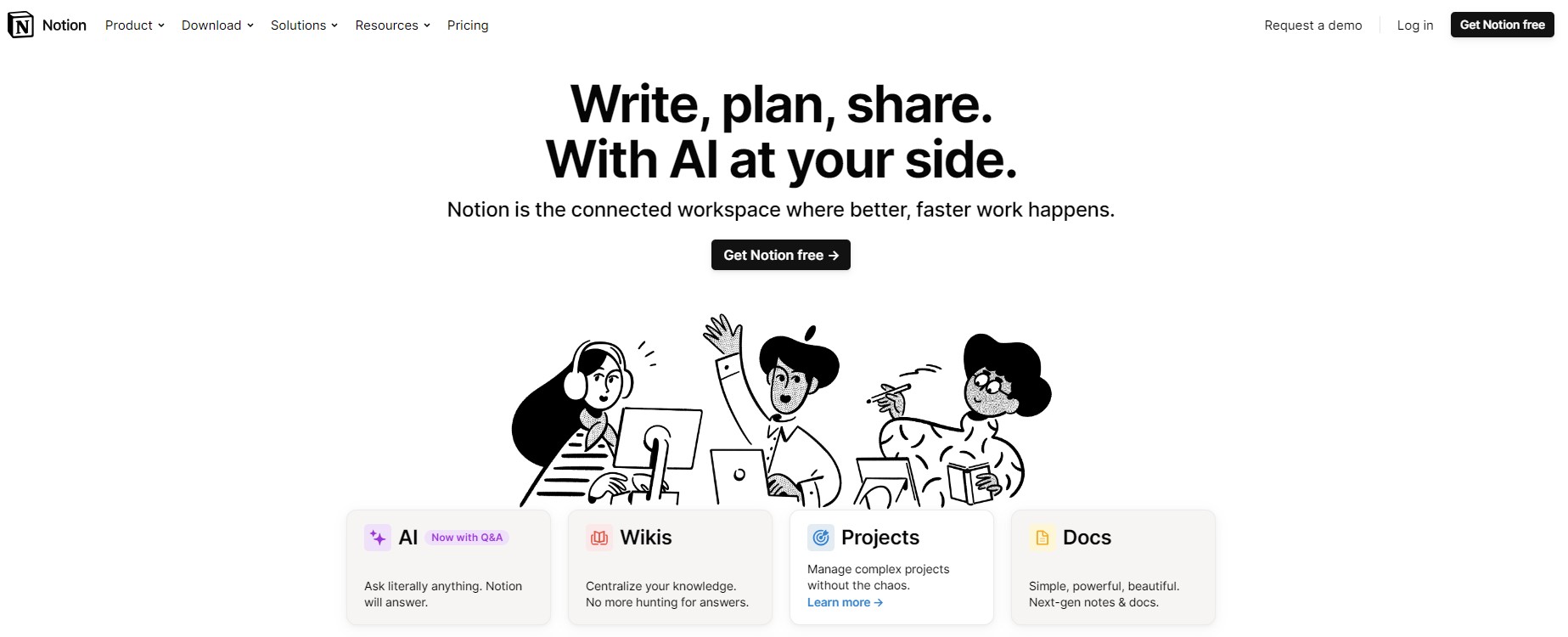
Key features include cross-platform functionality for seamless mobile and desktop use, rich media integration for dynamic content, and a variety of templates for different use cases. Notion is also known for its active engagement with user feedback, continuously updating and refining its features to improve user experience and adapt to the changing needs of its user base.
15. Rover
Rover’s UX design focuses on simplicity and user-friendliness, making it easy for pet owners to connect with pet sitters and dog walkers. The platform features a straightforward interface with an efficient onboarding process, requiring only essential information to start.
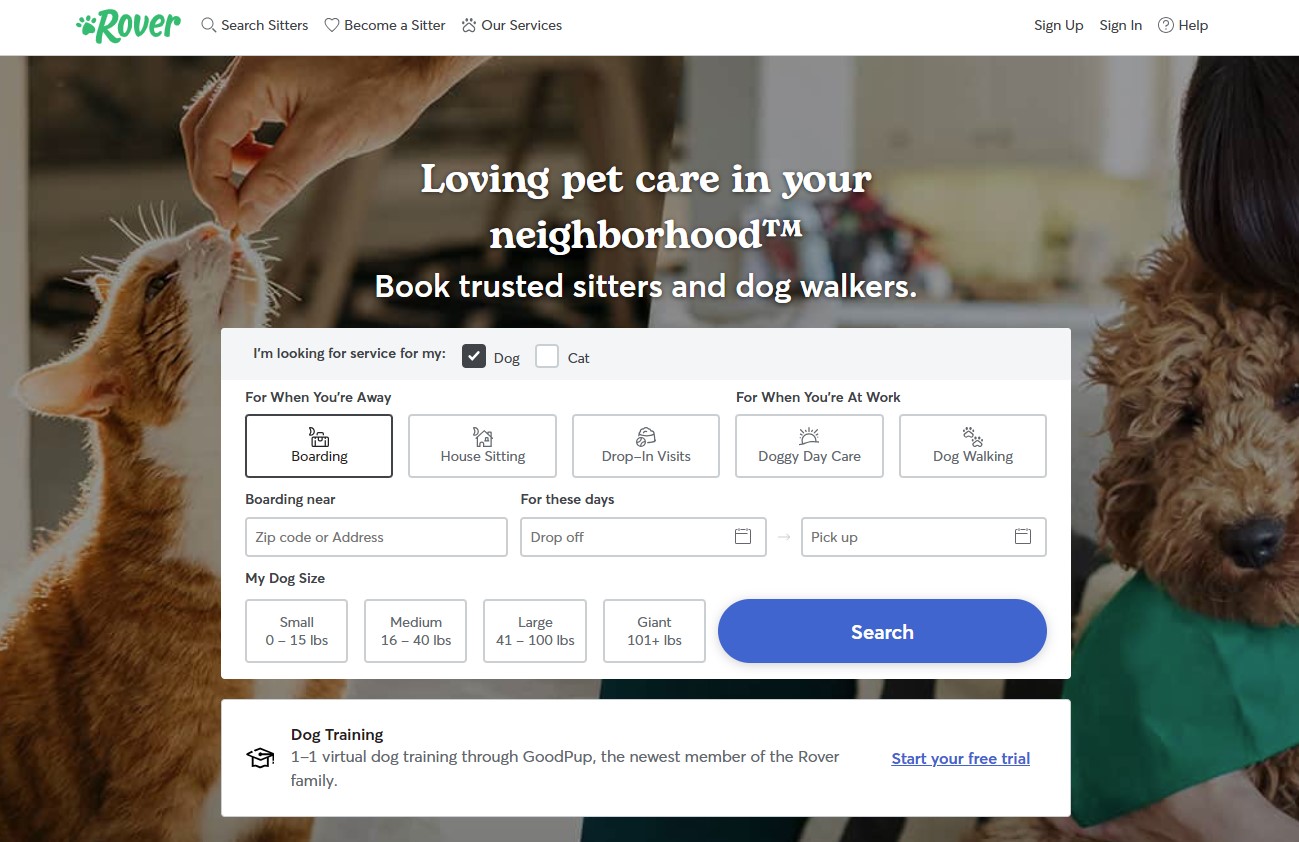
Clear calls-to-action guide users through the process of booking services. Rover’s robust search functionality allows for detailed filtering to find the right service provider, and trust-building features like user reviews and detailed sitter profiles enhance the platform’s credibility. Its responsive design ensures a consistent experience across various devices, and its visually appealing layout, featuring pet and sitter photos, creates a welcoming and engaging atmosphere. Additionally, Rover provides ample support and resources for both pet owners and service providers.
16. The Year of Greta
“The Year of Greta” website’s UX design features an interactive timeline focused on Greta Thunberg’s 2019 activism. It emphasizes visual storytelling with minimal text, using animations and videos for an immersive experience. The website employs innovative scrolling that aligns with the timeline format, enhancing user engagement.
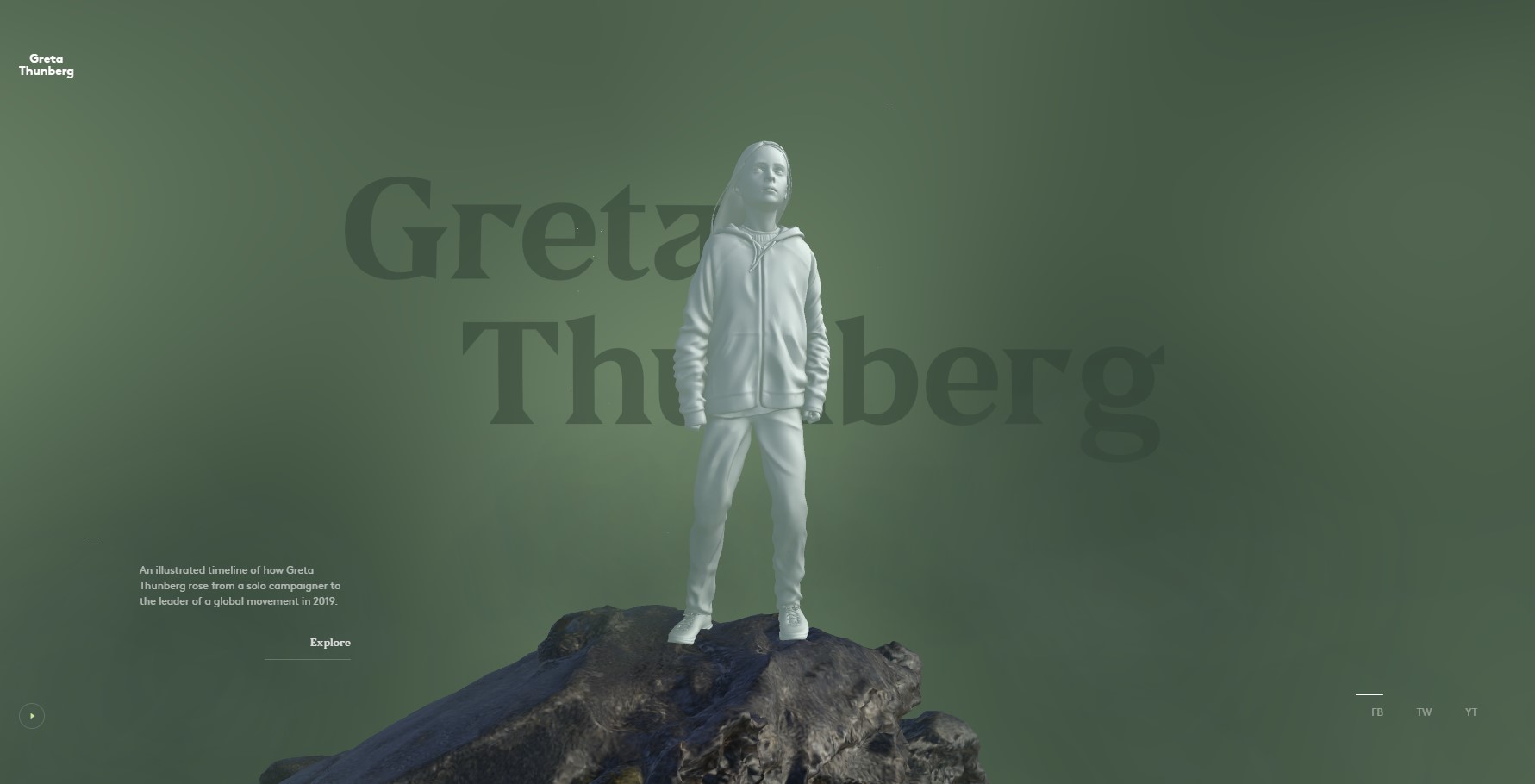
The design is emotionally resonant, using impactful imagery like Thunberg’s TIME magazine cover. The user interface is clean and straightforward, with a clear call-to-action at the end, encouraging further exploration. Responsive design ensures accessibility across various devices. This approach makes the website not only informative but also emotionally engaging and easy to navigate.
Why you should use Mageplaza development services?
If you are still searching for a development service provider, try our services right away!
In general, there are plenty of considerable reasons to think about employing Mageplaza development services. Here are a few significant points:
-
Expertise. We specialize in developing Magento solutions with experienced developers, delivering high-quality, customized solutions for leading e-commerce platforms.
-
Customization. Our development services offer customized solutions for businesses and organizations, ensuring alignment with their goals and objectives, including extensions, themes, and integrations.
-
High-quality extensions. We offer high-quality Magento extensions focusing on functionality, reliability, and performance, enhancing store features and capabilities without compromising quality.
-
Proven track record. Mageplaza has a strong track record of successful projects. We have worked with businesses of all sizes, from small startups to large enterprises, and have consistently delivered solutions that meet or exceed client expectations.
-
On-going support. We provide ongoing support and maintenance services for Magento stores, ensuring smooth operation through timely updates, bug fixes, security patches, and compatibility enhancements.
Your specific requirements will determine which development service provider you choose, so give us a chance to meet all of your needs!
Conclusion
To sum up, it is evident that UX design plays a significant role in website development. Throughout this article, we have introduced, investigated, and provided examples of excellent UX design websites.
Always remember that prioritizing UX design is extremely essential for your website because it enhances user experience by reducing abandonment rates, user frustration, and conversion possibilities.
Investing in building a UX design website is an investment for your company’s success because a well-designed website is not only visually attractive but also acts as a powerful tool to achieve your business goals and meet the evolving needs of your users.





![Top 20+ Must-have Shopify Apps for 2025 [Free & Paid] - Mageplaza](https://cdn2.mageplaza.com/media/blog/must-have-shopify-apps/top-must-have-shopify-apps.png)
![[2025 Updates] Top 10+ Upsell Apps for Shopify - Mageplaza](https://cdn2.mageplaza.com/media/blog/best-upsell-shopify-app/cover.png)